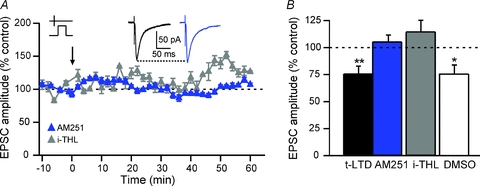Figure 6. t-LTD requires endocannabinoid signalling.

A, as illustrated by representative experiments, t-LTD induced by pre–post pairings was blocked after bath applied CB1R specific antagonist AM251 (3 μm) or i-THL (10 μm), an inhibitor the DGLα responsible for the synthesis of the 2-AG. The i-THL was dissolved in DMSO (0.1–0.025%); the DMSO by itself did not block the induction of the t-LTD. Insets: averaged EPSCs before (black) or after (blue) STDP protocols with AM251 treatment. B, the average of synaptic efficacy changes was 105.5 ± 6.1% after AM251 treatment (n = 5), 114.8 ± 10.4% with i-THL (n = 9) and 76.2 ± 8.2% with vehicle controls (DMSO 0.1–0.025%) (n = 8). ns: not significant, *P < 0.05, **P < 0.01.
